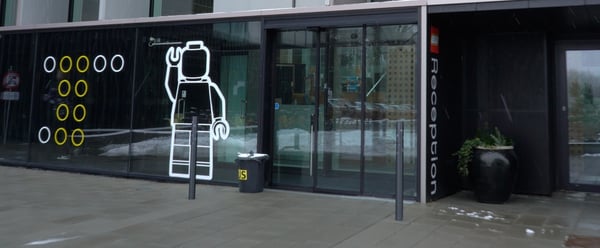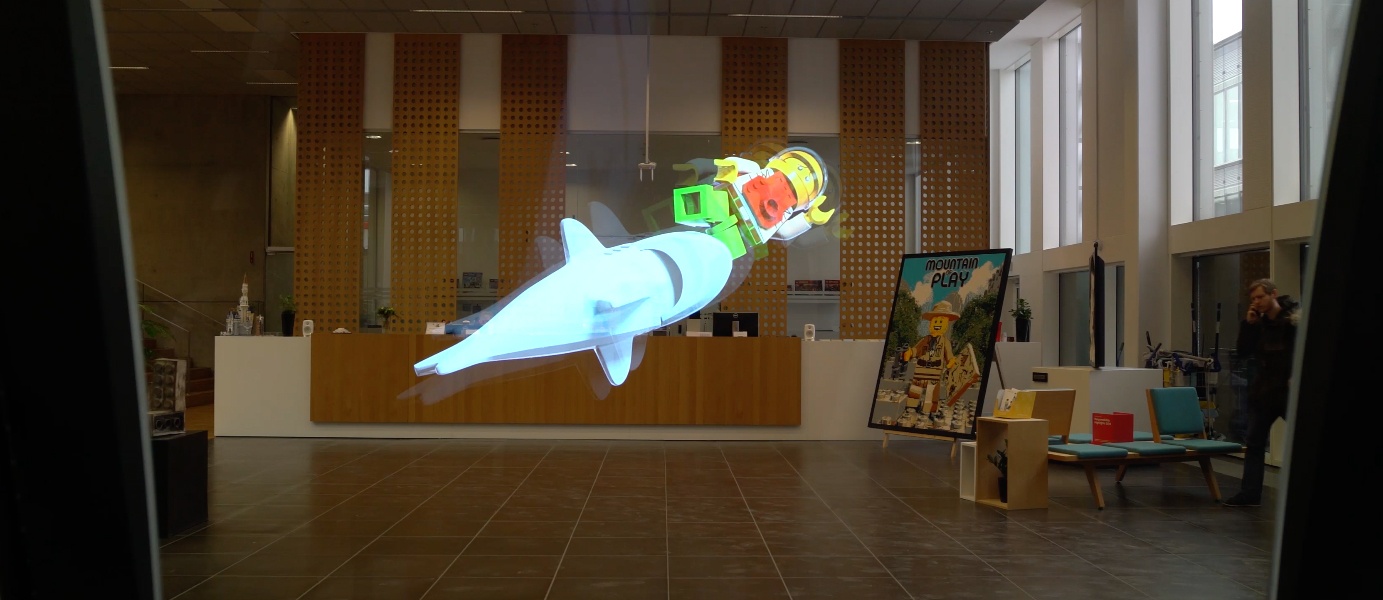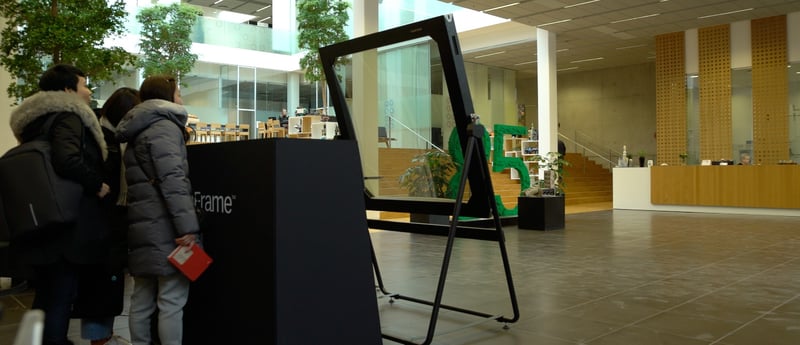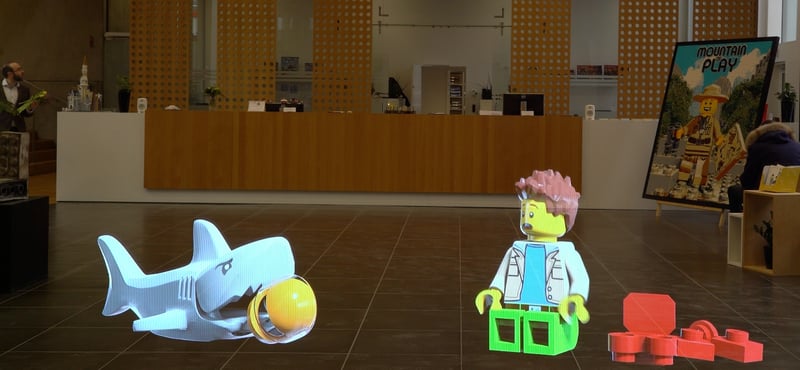Lego
“Using reality as the platform makes it relatable, inserting a digital object into that same reality is what makes the DeepFrame a larger-than-life experience. If you ask me, that’s storytelling right there.”
says Mikkel Lee, who works in the LEGO Innovation House and is involved in developing new ways of doing storytelling at LEGO and for a fortnight, LEGO Innovation House and Realfiction joined forces to showcase the DeepFrame and its capabilities.
Video from DeepFrame at LEGO Flagship store in Copenhagen, December 2018
Putting the kids center-stage
During February and March 2018, LEGO Innovation House hosted the DeepFrame in its lobby, where employees and partners could view and try out the features of augmented reality.
LEGO Innovation house is LEGO’s internal innovation hub for most of LEGO’s departments, where new ideas are made, tested, and evaluated. Naturally this is a place where employees from all over LEGO congregate to experience the newest and out-there ideas.

But the project between LEGO and Realfiction came from a conversation about ghosts. Mikkel Lee explains:
“A few years back, I was working on a museum here at LEGO and wanted to tell stories about ghosts, but how do you do that? Peter from Realfiction said, “I know how to do that” and that’s how this started.
For me it’s about putting the kids center stage and enhancing the world where they operate. The DeepFrame can make LEGO come alive. By projecting additional features or objects into the real world you are enhancing reality,”
says Mikkel Lee, who’s interest in new technologies is self-evident.
“It’s my responsibility to find and introduce new ways of doing storytelling at LEGO and while augmented reality has been around for a while, the technology behind the DeepFrame provides such a level of detail and at such a scale that it makes the experience very convincing. That’s why we chose to do an experiment with the DeepFrame,” says Mikkel Lee.

Imagining the DeepFrame in action
Testing concepts in real life is, not surprisingly, a central part of innovation. Merely talking about technology can become very abstract and rarely leads anywhere, whereas testing technologies in real life gets people talking and thinking.
“If you want new technologies implemented, you need people to become interested and start thinking for themselves. You need them to develop their own vision for the new technology. They need to see for themselves what the technology can and cannot do,”
says Mikkel Lee, who emphasises the emotional qualities that the DeepFrame experience provides:
“With the DeepFrame’s ability to deliver a high-resolution image the illusion became real. So much so, that employees walked off in protest when the animation movie portrayed the LEGO figure being eaten by a shark. The DeepFrame’s ability to engage viewers emotionally to such a degree is its true strength and what has lead employees to be able to imagine future possibilities with the technology,”

Looking to the future of rides and retail
Looking to the future, the DeepFrame project has kicked off a dialogue between LEGO and Realfiction. How a collaboration may come to fruition is still in the unknown. But one thing is for sure, the idea of using mixed reality in the LEGO experience is alive and well.
“Imagine implementing holographic lenses on rides in LEGO Land. Here we’d be able to project anything imaginable onto the surroundings, like the Ninjago or Elves theme. The experience could be changed from day to day or tailored to the individual rider. This is both interesting because it would heighten the ride experience and simultaneously offer a cost-effective solution, because you’re just swapping digital layers instead of physical structures,” says Mikkel Lee and continues:
“Of course, the possibilities don’t stop here, and I imagine that stores could use the technology to display the newest products or themes in a fascinating manner by the touch of a button,” says Mikkel Lee.
Looking to the future Mr. Lee sees the merging of digital objects into our world as a trend that will take hold:
“There’s no doubt that screens are playing a bigger role in our public spaces and the holographic technology stands out and makes people stop. But it’s the optical lens’ ability to merge digital objects with reality that makes the difference. People need something that is relatable. The trend is definitely leaning towards technologies that can take storytelling to the next level,”
